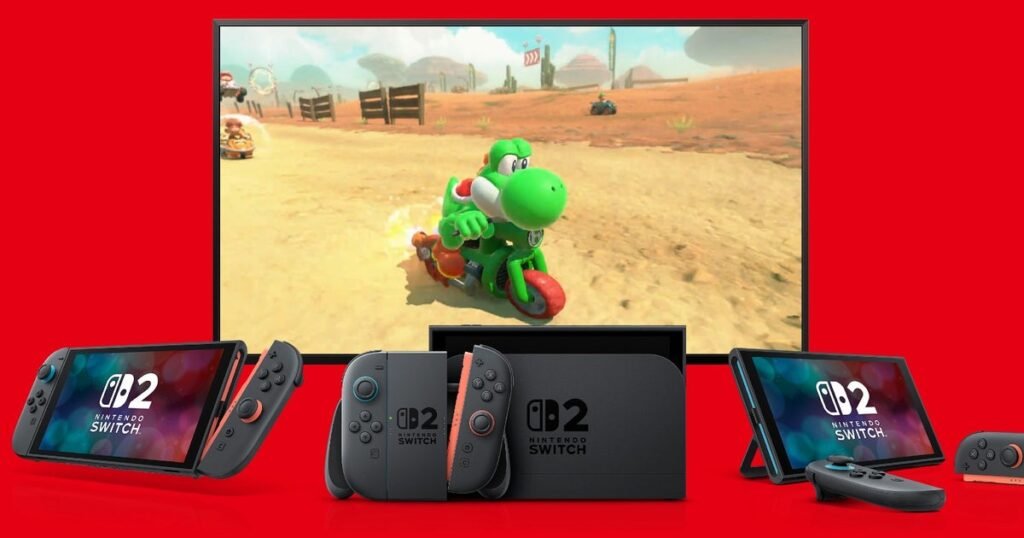
Midnight sales events, long queues, pre-orders sold out in minutes; the long-awaited arrival of the Switch 2 really has the atmosphere of great console launches of the past.
After the muted, pandemic-era launches of the PS5 and Xbox Series X/S consoles, a big, high-profile hardware launch like this is a shot in the arm for the whole industry – a much-needed boost in an era of growing concern over how the next few years are going to shake out economically.
One factor that the Switch 2 launch does seem likely to have in common with the PS5 launch in particular, however, is supply constraints. Nintendo seems to have managed to get a solid amount of stock to retailers for the launch, but demand for the new system is very high and likely to remain well ahead of supply for quite a few months.
This mirrors the situation with the PS5, which left many consumers deeply frustrated and feeling like Sony was failing to supply the market adequately, even though in reality supply of the PS5 was higher than for any previous console launch. It also, of course, created enormous opportunities for scalpers, whose actions massively exacerbated the supply issues.
There’s nothing complicated to explain here: it’s simply a new, better, faster version of a console that people already really like
Nintendo has tried to avoid that in various ways – requiring an active Nintendo account with a history of usage to secure pre-orders, for example – but we’ll have to wait and see how successful those efforts have been, or whether this will be another launch that turns into open season for scalpers.
The actual way to avoid scalpers turning up and ruining the fun, of course, is to get better at matching supply to demand – but that is, of course, far easier to say than to do. Forecasting demand for something like a console is tricky, and ramping up supply isn’t as simple as turning a dial in the factory.
Often, hardware supply has to be managed in major step-changes. Increasing supply can mean retooling a whole production line, or even an entire factory, which is very costly and represents a huge risk if your demand forecasts turn out to have been too optimistic.
No company wants to get stuck with a large number of hardware units they can’t sell, let alone with factory production lines that they don’t need. In an ideal world they’d love to perfectly match supply to demand and sell every unit they can, but they’ll always opt to take a hit from supply being constrained rather than risking over-supply.
Nintendo’s target for Switch 2 for the fiscal year is 15 million units, which is a very solid number by the standards of console launches historically, but it’s probably extremely conservative compared to the actual demand which exists for the device. This is a very unique console launch, after all. It’s an anomaly for Nintendo itself – a clear, direct sequel device to the prior console, maintaining essentially the same form factor and functionality, has not been part of Nintendo’s modus operandi for decades.
The original Switch has sold over 150 million units, making it comfortably one of the most successful pieces of gaming hardware in history, and remains a tremendously popular and well-loved device – but after eight years on the market, it’s clearly long in the tooth and most consumers won’t need much convincing that an upgrade is timely.
That creates a huge groundswell of demand for the new console. There’s nothing complicated to explain here: it’s simply a new, better, faster version of a console that people already really like, but which even non-technical audiences who don’t know one end of a Digital Foundry video from the other can see is pretty underpowered by modern standards.
The handheld nature of Switch will also help to make the upgrade more tempting for many consumers, since it’s the easiest possible console to upgrade and pass down to younger siblings, children, nephews / nieces etc. when you upgrade, as distinct from fixed home consoles that also need to be attached to a TV.

Looked at from this perspective, the 15 million target for the Switch 2 this year really does start to look conservative. It may be a good number for a games console generally, but it’s less than 10% of the units sold by its predecessor, and it’s not unreasonable to posit that the potential audience size for the new device is not dissimilar to the previous one.
That mismatch almost certainly guarantees major supply constraints for months to come, especially as the software library for the new console grows and major new titles are announced (although it’s clear that a lot of consumers will also buy the console just to play their existing Switch library on better hardware).
You can’t entirely blame Nintendo for being very cautious about how they approach the risk profile for the Switch 2’s supply, however. The whole console is essentially an attempt by the company to overcome its long-running curse, after all: time and time again, successful Nintendo consoles are followed by flops.
Switch 2 looks likely to break that curse, simply by not departing from the winning formula of the previous device.
Still, success is never guaranteed, and with additional economic risks such as tariffs, the weakness of the Yen, and some recession indicators all floating around the console launch and giving executives in Kyoto sleepless nights, nobody should be surprised that Nintendo has sought to minimise risk in every possible way for this launch, including sticking to a fairly conservative supply target.
It’s too early to proclaim Nintendo’s curse to be broken, but all the signs so far are good
Nevertheless, the strong early response to the console and the prospect of a 15 million installed base by the end of the financial year will make Switch 2 into a major new addition to the industry landscape, and a tempting prospect for developers and publishers even in the early stages of its lifespan. It will be interesting to see if the system follows in the footsteps of its predecessor and has a bit of a golden age for smaller and independent titles in its first few years.
That era eventually ended on the Switch as the eShop became swamped with low-quality shovelware that Nintendo seemingly had no inclination to control or manage, but as new buyers of Switch 2 seek out interesting new software for their console in a relatively uncluttered market, it should create new opportunities for developers – and perhaps this time around Nintendo will make more of an effort at quality control and try to maintain that market in the long term.
For now, the console that’s arguably had the longest gestation period of any device in the industry’s history is finally in the hands of at least a few lucky consumers, and the early word of mouth is largely positive.
It’s too early to proclaim Nintendo’s curse to be broken, but all the signs so far are good – and a healthy launch for the Switch 2 is good news not just for Nintendo, but for the industry at large.






